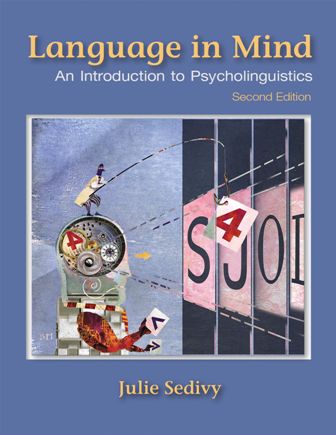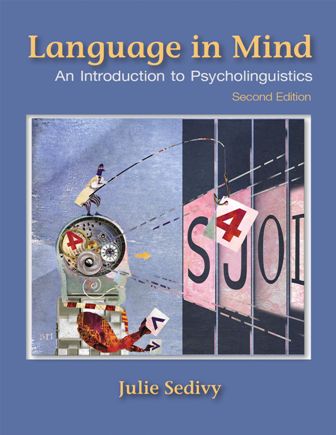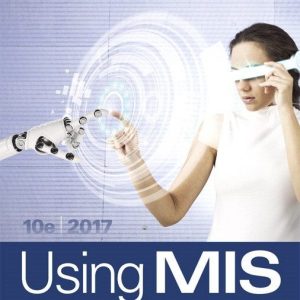Instant download Test Bank for Language in Mind: An Introduction to Psycholinguistics, 2nd Edition, Julie Sedivy pdf docx epub after payment.

Product details:
- ISBN-10 : 1605357057
- ISBN-13 : 978-1605357058
- Author: Julie Sedivy
Written by a professional writer and researcher, Julie Sedivy’s Language in Mind, Second Edition provides an exceptionally accessible introduction to the challenging task of learning psycholinguistic research, theory, and application. Offering a research-based approach-supported by the new “Researchers at Work” feature which shows the process of conducting an experiment-Language in Mind emphasizes not just what psycholinguists know, but how they’ve come to know it. To deepen the student’s exposure to research and scientific thinking, which is an important skill in follow-up courses, the text also includes a critical examination of primary literature and the debates in the field (supported by the in-text “Digging Deeper” feature; and online with Web Activities and “Language at Large” modules). To complete the study of psycholinguistics, the text establishes connections between theory and everyday phenomena (supported by Boxes and “Questions to Contemplate” features). A robust
4-color illustration program distinguishes this book from others, and further explains and illustrates challenging material.
Table of contents:
- Media and Supplements
- 1 Science, Language, and the Science of Language
- 1.1 What Do Scientists Know about Language?
- 1.2 Why Bother?
- 2 Origins of Human Language
- 2.1 Why Us?
- 2.2 The Social Underpinnings of Language
- 2.3 The Structure of Language
- 2.4 The Evolution of Speech
- 2.5 How Humans Invent Languages
- 2.6 Language and Genes
- 2.7 Survival of the Fittest Language?
- 3 Language and the Brain
- 3.1 Evidence from Damage to the Brain
- 3.2 Mapping the Healthy Human Brain
- 3.3 The Brain in Real-Time Action
- 4 Learning Sound Patterns
- 4.1 Where Are the Words?
- 4.2 Infant Statisticians
- 4.3 What Are the Sounds?
- 4.4 Learning How Sounds Pattern
- 4.5 Some Patterns Are Easier to Learn than Others
- 5 Learning Words
- 5.1 Words and Their Interface to Sound
- 5.2 Reference and Concepts
- 5.3 Understanding Speakers’ Intentions
- 5.4 Parts of Speech
- 5.5 The Role of Language Input
- 5.6 Complex Words
- 6 Learning the Structure of Sentences
- 6.1 The Nature of Syntactic Knowledge
- 6.2 Learning Grammatical Categories
- 6.3 How Abstract Is Early Syntax?
- 6.4 Complex Syntax and Constraints on Learning
- 6.5 What Do Children Do with Input?
- 7 Speech Perception
- 7.1 Coping with the Variability of Sounds
- 7.2 Integrating Multiple Cues
- 7.3 Adapting to a Variety of Talkers
- 7.4 The Motor Theory of Speech Perception
- 8 Word Recognition
- 8.1 A Connected Lexicon
- 8.2 Ambiguity
- 8.3 Recognizing Spoken Words in Real Time
- 8.4 Reading Written Words
- 9 Understanding Sentence Structure and Meaning
- 9.1 Incremental Processing and the Problem of Ambiguity
- 9.2 Models of Ambiguity Resolution
- 9.3 Variables That Predict the Difficulty of Ambiguous Sentences
- 9.4 Making Predictions
- 9.5 When Memory Fails
- 9.6 Variable Minds
- 10 Speaking: From Planning to Articulation
- 10.1 The Space between Thinking and Speaking
- 10.2 Ordered Stages in Language Production
- 10.3 Formulating Messages
- 10.4 Structuring Sentences
- 10.5 Putting the Sounds in Words
- 11 Discourse and Inference
- 11.1 From Linguistic Form to Mental Models of the World
- 11.2 Pronoun Problems
- 11.3 Pronouns in Real Time
- 11.4 Drawing Inferences and Making Connections
- 11.5 Understanding Metaphor
- 12 The Social Side of Language
- 12.1 Tiny Mind Readers or Young Egocentrics?
- 12.2 Conversational Inferences: Deciphering What the Speaker Meant
- 12.3 Audience Design
- 12.4 Dialogue
- 13 Language Diversity
- 13.1 What Do Languages Have in Common?
- 13.2 Explaining Similarities across Languages
- 13.3 Words, Concepts, and Culture
- 13.4 Language Structure and the Connection between Culture and Mind
- 13.5 One Mind, Multiple Languages
- Glossary
- Literature Cited
- Author Index
- Subject Index
People also search:
Language in Mind: An Introduction to Psycholinguistics, 2nd Edition
Language in Mind: An Introduction to Psycholinguistics, 2nd Edition pdf
Language in Mind: An Introduction to Psycholinguistics
stages of language acquisition in psycholinguistics
what is language acquisition in psycholinguistics





